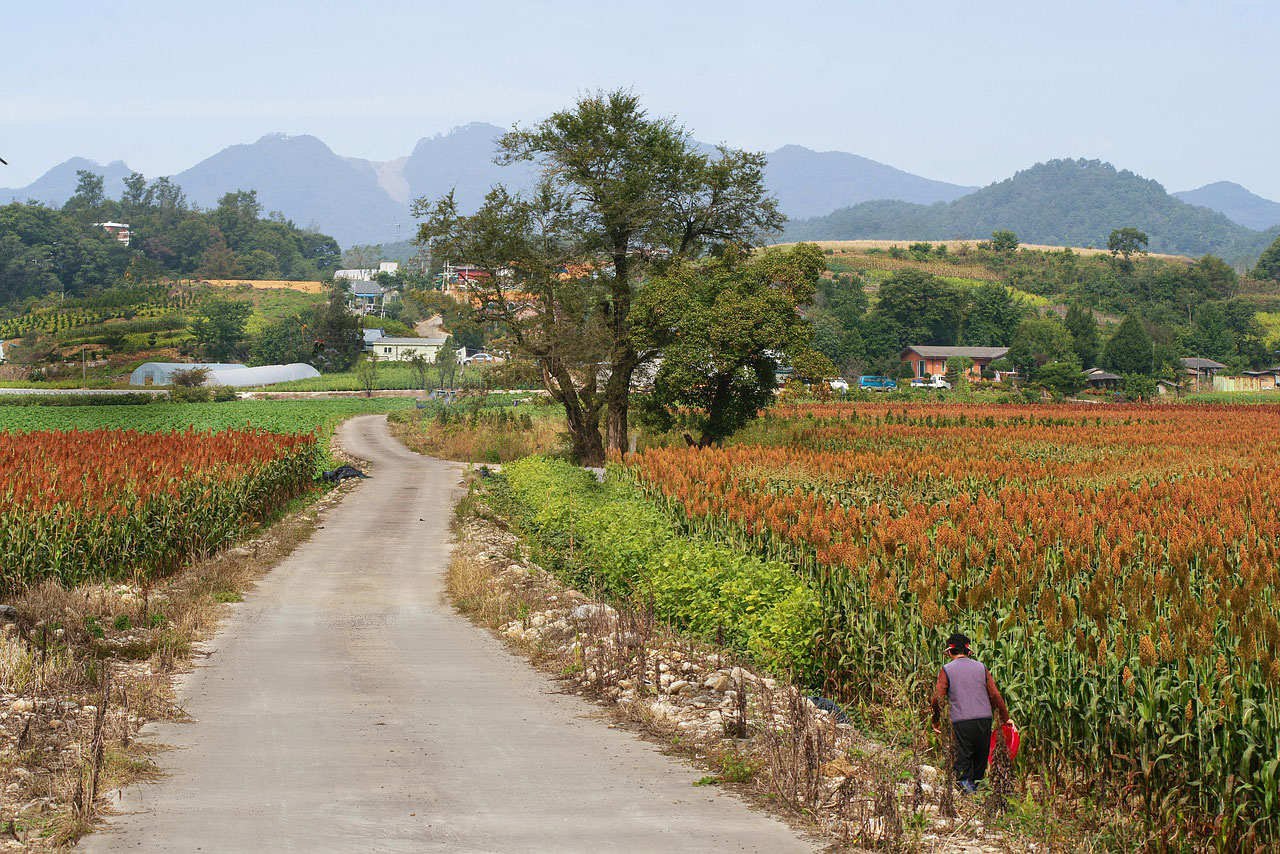To drone or not to drone—is that really the question?
For farmers in North America this isn’t much of a question at all. Small, remotely operated aerial vehicles already have niche uses for the developed world’s farms, but when a farm consists of several hundred or even thousands of hectares, monitoring crop conditions with remote sensing data acquired by satellites is usually more efficient. Satellites won’t provide plant-by-plant resolution, but farmers managing massive operations generally don’t need that level of detail to make decisions that improve their crops.
The story may be different for smallholder farmers managing plots of land of around an acre or even less. They are unlikely to have access to satellite remote sensing data, or to make much use of it if they do. In this context, finer-resolution images obtained from drone photography could prove valuable. Yet scientists debate whether drone technologies actually benefit to smallholder farms. For example, a 2018 study from Ghana makes a convincing case that drones can help smallholder farmers monitor and improve maize yields, but a newer study out of Nigeria published in December reached the exact opposite conclusion.
A 2018 article in the journal Drones explains how a team of Swedish and Ghanaian scientists set out to determine whether drone technology could do for Ghana’s smallholder farms what remote-sensing technologies do for large farms in the West, namely estimating crop yields and the gaps between actual and potential yields. They launched an unmanned aerial vehicle (UAV) over fields in the village of Akatiwia in eastern Ghana. The drone was fitted with a commercially available GoPro camera, modified to capture the near-infrared and the red-green-blue spectra. Modified spectral photography via remote sensing helps farmers capture differences in vegetative cover, so the researchers hypothesized that the same could be performed at a smaller scale with the drone. It didn’t work perfectly—they admitted that “maize was sometimes confused with cassava and sometimes with undergrowth” and they overestimated the number of plants by 15 percent—but the team nevertheless declared their experiment a success. “The system can be applied…for the calculation of vegetation fraction, an important input for yield estimates for heterogeneous farming systems,” they concluded.
Last year, a team of Nigerian and Kenyan scientists repeated this experiment using a UAV with more sophisticated multispectral imaging capabilities. They launched a drone over 31 maize farms in Nigeria’s prime maize region, taking images over a period of several weeks. Their aim was the same—to determine crop yield, and thus identify yield gaps, by comparing yield estimates derived from aerial surveillance to direct on-the-ground assessments. As they wrote in the journal Agronomy, their study found “low predictability of grain yield in farmers’ fields.” However, UAV imagery was useful for non-yield data on crop health and nutrient status.
Whether they work as intended or not, drones are gaining popularity in Africa. Researchers with the European Union’s Technical Center for Agriculture and Rural Cooperation (CTA) surveyed 1,400 farmers in English-and French-speaking African countries to assess attitudes toward drones. Eighty-five percent of respondents said they held favorable impressions of drones. At the same time 84 percent said “awareness of the technology is generally low,” and respondents agreed by a wide margin that drone technologies are more suitable for larger and more sophisticated farms. Drones can be expensive and difficult to operate, and farmers who lack basic farm instruments like tractors and plows may see little use for quadcopters, fixed-wing UAVs, and GoPro cameras.
On the African continent, drone use appears to be gaining ground farms are becoming bigger and governments are helping farmers to scale up. According to CTA, drone regulations are in place in Ghana, Nigeria, and much of the southern tip of the continent, including South Africa, Namibia, and Botswana. Similarly, in Europe and the US, where thousands of the devices have already been put to work on farms, regulations are precise and sophisticated, including registration requirements and even “no fly zones. In contrast, some African countries, mainly in the north, have banned drones, and many countries have no regulations. ” If drone enthusiasts want to see their toys win popular support on Africa’s farms, they should perhaps find ways to make these devices legal, more accessible, and more affordable for smallholder farmers.
Some are setting out to do just that. Analysts at Sahel Consulting Agriculture and Nutrition Ltd. highlight in their latest report the rise of registered startups in Nigeria offering drone monitoring and measurement services to farmers. A smallholder maize farmer in West Africa may never be able to purchase and operate a drone on her own, but a community can certainly afford the services of an independent drone operator serving many clients. Sahel lists drone-enabled precision farming as one of the major trends in agriculture to keep an eye on in 2021 and beyond. Though studies may reach varying conclusions on the utility of drones today, there is a consensus in the academic literature that more innovation is needed to help smaller farming operations benefit from drone technology.
Grow Further will be keeping a close eye on advances and cost reductions in drone technology and may support related projects that are relevant to smallholder farmers.
–Grow Further




